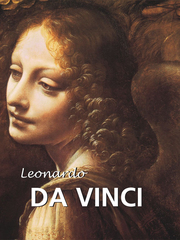Detailansicht
Leonardo da Vinci
eBook
ISBN/EAN: 9781780422954
Umbreit-Nr.: 1605663
Sprache:
Englisch
Umfang: 160 S., 45.43 MB
Format in cm:
Einband:
Keine Angabe
Erschienen am 01.07.2011
Auflage: 1/2011
E-Book
Format: PDF
DRM: Nicht vorhanden
€ 9,99
(inklusive MwSt.)
Sofort Lieferbar
